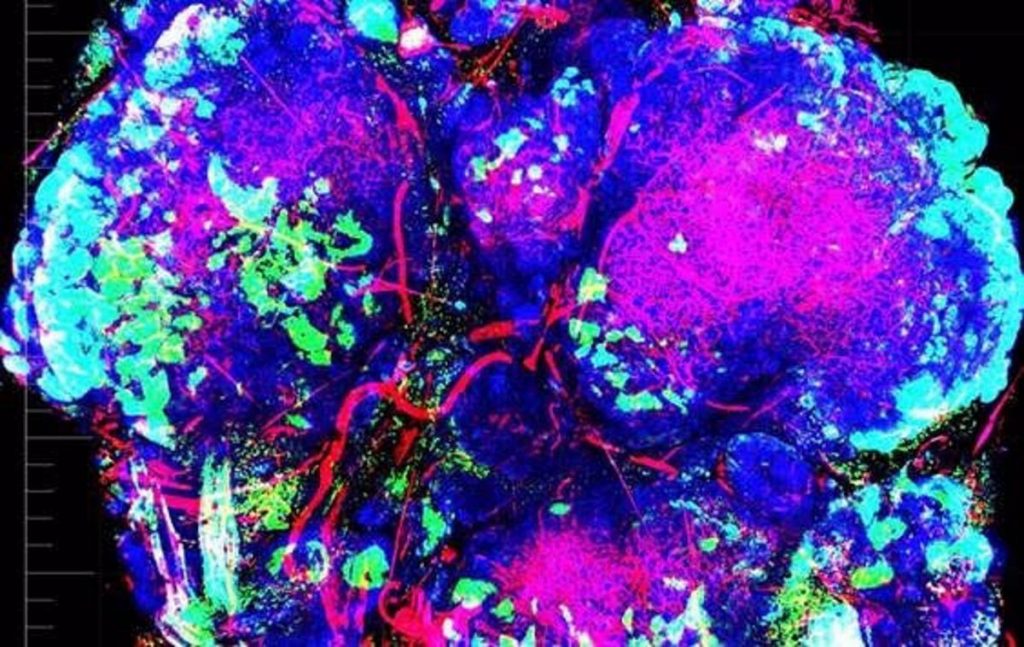[ad_1]
That’s what researchers at the National Cancer Research Center (CNIO) found out cell lines one of the causes for multi-resistance and a strategy potential for fight it.
One of major challenges in cancer is to understand why it patients the they don’t answer to the treatments. In some cases, tumors present what is known multi-resistance, which meaningfully limits the therapeutic options for patients.
“Our result explains why this is the case with some tumors Many of the usual therapies do not workand at the same time identifies the weak spot these cancers resistant. Now we know that vulnerability It can blow occupy drugs that already exist,” explains Óscar Fernández-Capetillo, head of the CNIO Genomic Instability Group and lead author of this study, published in the scientific journal EMBO Molecular Medicine.
As the study shows mutations that inactivate the function of a particular gene, FBXW7, “reduce the sensitivity to the vast majority therapies available” and “at the same time they return vulnerable the cells of tumor on the effects of a certain type of medication: those that activate the “integrated stress response” (ISR). FBXW7 is one of the ten most common genes mutated in and associated with human cancers bad survival in all.
A VERY COMMON MUTATION IN HUMAN CANCER
The study started with mutation search using CRISPR technology to induce resistance in mouse stem cells to antitumor drugs such as cisplatin, rigosertib or ultraviolet light. That mutations in the FBXW7 gene quickly emerged, suggesting that such a mutation could be transmitted multi-resistance.
Bioinformatic analysis of databases such as the Cancer Cell Line Encyclopedia (CCLE), with information about the answer over a thousand lines human cancer cells to thousands of connections confirmed that the mutated cells FBXW7 are resistant to most drugs available in this data set.
Regardless of the mutationsresulted in additional analyzes in the Cancer Therapeutics Response Portal (CTRP). reduced levels Expression of FBXW7 was also associated with a worse response to chemotherapy. Indeed, the authors propose to be able to use FBXW7 levels as a biomarker predict the patient response to drugs.
WITHOUT FBXW7, THE MITOCHONDRIA WILL BE STRESSED
founded the relationship Between FBXW7 deficiency and multidrug resistance, the researchers looked for theirs because. They found her in mitochondriathe organelles of the cell involved in metabolism and cellular respiration.
FBXW7-deficient cells showed an excess of protein related to mitochondriasomething that had been seen before associated to drug resistance. A detailed analysis of these organelles further revealed that the mitochondria of these multi-resistant cells emerged under a lot of stress.
These last dates would be revealed key code to be able to identify strategies that exceed drug resistance of cells with mutations in FBXW7. That mitochondria are the leftovers ancient bacteria, which merged with primitive eukaryotic cells billions of years ago; and if the Antibiotics attack bacteriaResearchers have wondered whether a Antibiotic kills a cancer cell too rich mitochondria.
In the past they have been identified antitumor properties secure antibioticsbut it was about isolated cases and therefore potentially attributable single mutations -unknown- of the patient.
Indeed, Fernández-Capetillo and his group prove that antibiotic is tigecycline poisonous for FBXW7-deficient cells that a new ways of research Dealing with multidrug resistance.
But perhaps more pertinent is establishing why this is so antibiotic has properties antitumor. The authors of the work now published show that tigecycline kills cells by means of the hyperarousal the integrated stress response (ISR) and also show that other drugs that can activate the ISR are also toxic cells with mutations in FBXW7.
Many of these ISR-activating drugs are oncological therapies in common clinical use today and previously thought to work other mechanisms. However, this work shows that part of its antitumor effect is due to its effect activate the ISR.
“Our studies, added to other recent ones, suggest that activating the ISR could be one way overcome resistance to chemotherapy. Nevertheless, There is much to do. Which drugs activate the ISR best and most strongly? Which patients would benefit most from this strategy? We want to devote ourselves to answering these questions in the near future,” says Fernández-Capetillo.
The work was funded by the Ministry of Science and Innovation, the Spanish Association Against Cancer (AECC) and the “La Caixa” Foundation, among others.
[ad_2]
Source link
